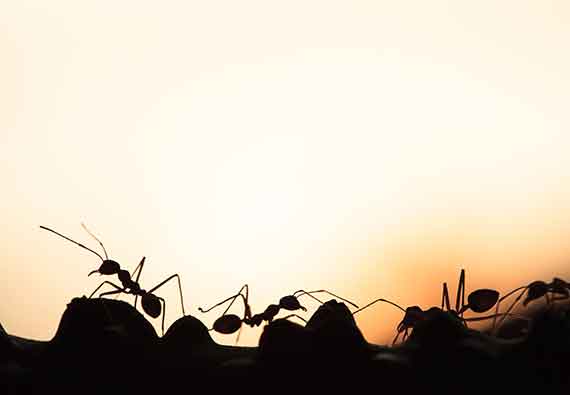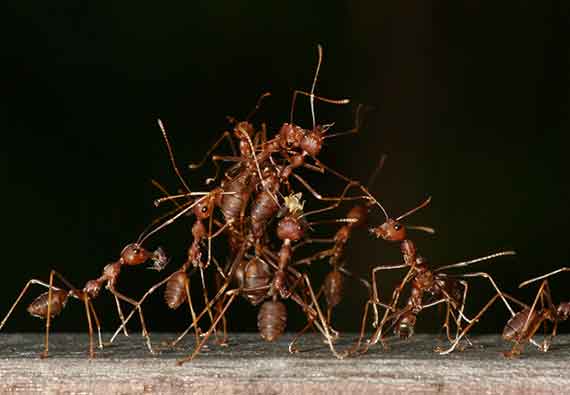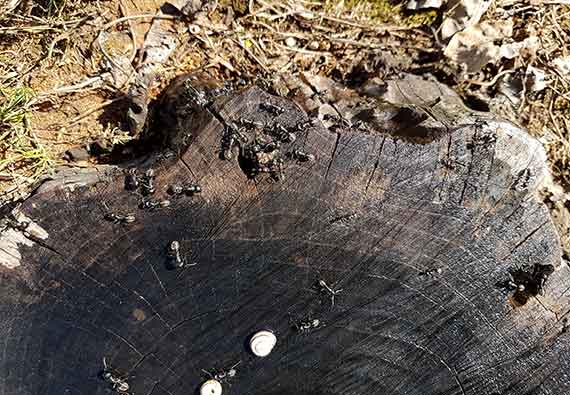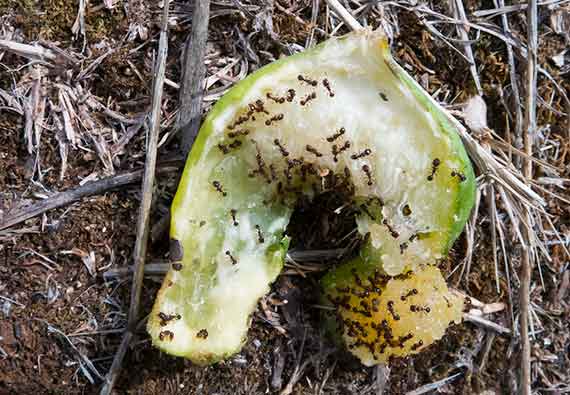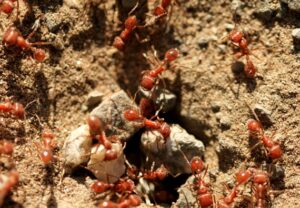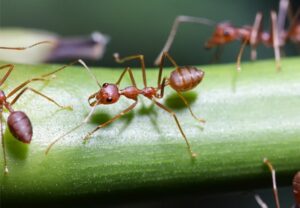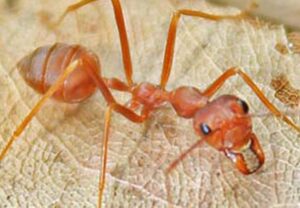Deborah Gordon of Stanford University conducted an experiment to see how ants find food. She put a layer of dried sugar water in an arena. Different Argentine ant colonies searched for the food, then came back empty-handed. She traced the trails the ants made, and found that few ants in a big space moved in somewhat straight lines; when the ants became crowded, the ants made more curved paths. “The overall patrolling pattern resembles an elastic net whose lines stretch and straighten when ants are few, but contract into convoluted curls when they are plentiful, (“Networking Ants”).
William Creighton conducted an experiment to see how ants forage for food. He found they do it in files. “Although the ants in the file are close together they evidently follow a scent path . . . I repeatedly observed that in the case of Iridomyrmex humilis, the file can be thrown into great confusion by simply drawing a finger across the path. A ‘traffic jam’ immediately develops at either side of the patch of foreign scent, and this persists until a few bold spirits have ventured across the finger mark and reestablished the proper scent trail,” (The Ants of North America).
A traffic jam example could be seen in the movie A Bug’s Life. In the beginning of the movie, a trail of ants is interrupted when a leaf falls in front of one of the insects. The ant complains of losing the path. This is an accurate depiction of observed ant behavior.
The smallest Argentine ant workers become nurses. They care for the eggs, larvae, pupae, and young ants. Other workers have jobs such as slave-making, where the ants sneak into other ant colonies and steal eggs. Workers also herd and milk aphids. All workers generally live about four years. Colonies may consist of hundreds to thousands of members. If one ant does not do its job, the other ants will suffer from that ant’s lack of responsibility. New colonies form from older ones. This is called budding.




